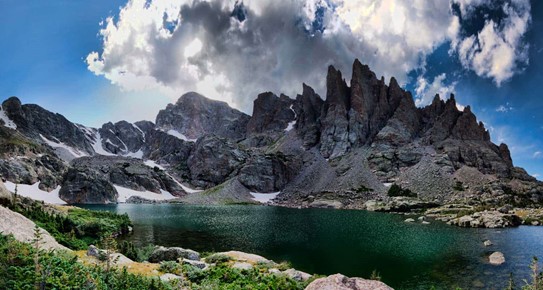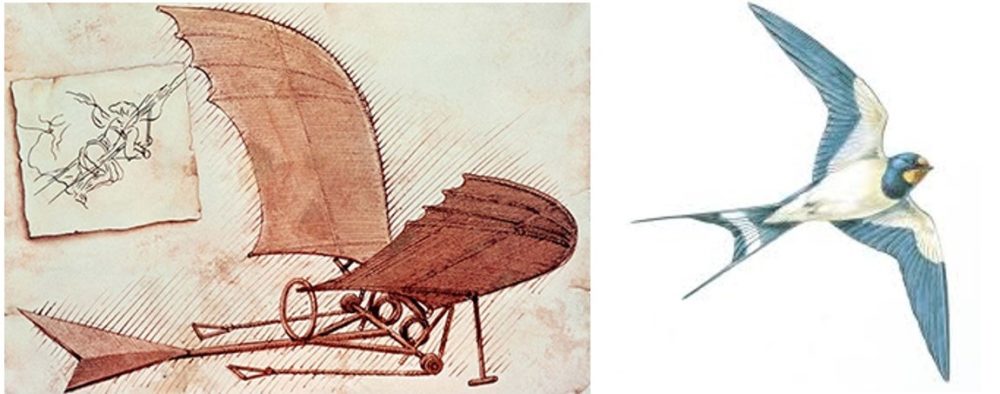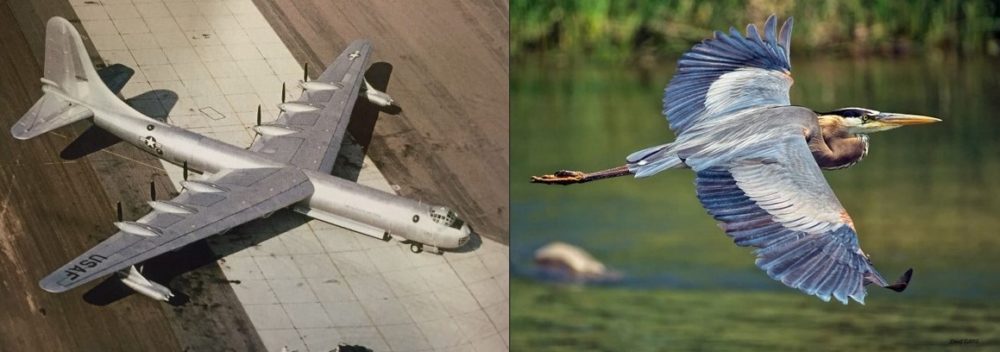Picture this, you are hiking up to Sky Pond in Rocky Mountain National Park. As you crest the ridge line and the lake comes into view, you catch a red tail hawk, soaring effortlessly through the peaks and troughs of the exposed ridgeline above you before it delicately sets down across the glassy water on a distant rock. Aviation is beautiful. For me, this image evokes awe and maybe a bit of jealousy that nature could create such a perfect and elegant mechanism of flight. Us non winged creatures have long envied our avian friends and built for ourselves beautiful machines that help us simulate their awe-inspiring capabilities. Aviation holds within its bounds perhaps one of the most elegant balances between functionality and aesthetics. In this post I will explore the development of the aesthetics and design of the miracle that is human flight.

Sky Pond in Rocky Mountain National Park. Photo by Aaron Johnson.
It could reasonably be argued that the aesthetic of aviation was created by mother nature. But for the purposes of the human breed of aviation we will say that the aesthetic was collaboratively created by nature and by man. In the 15th century Leonardo da Vinci produced some of the first drawings of flying machines, quite clearly drawing inspiration from the shapes and structures that define nature’s flying creatures. The aesthetic established by his interpretation of nature has transcended time and inspired the design of aircraft for centuries. Even today some of these aesthetic characteristics such as long swept wings, and light weight frames can be found in our most advanced aircraft.

One of Leonardo da Vinci’s early drawings of a flying machine compared to a swallow.
Over the years the aesthetic of aviation has continued to develop. Since the Wright brothers made the first powered flight in 1903, over a century of designers have drawn from nature and from functional necessity to create beautiful and highly capable pieces of engineering. Early on, much of the aesthetic development was driven by military necessity. As aircraft were needed to fly longer distances and carry larger loads, their designs employed long aerodynamic wings and robust frames similar to those of nature’s largest birds.

A B-36 with its 230 foot wingspan compared to a Great Blue Heron with its wings outstretched.
Then aircraft were required to fly fast and be highly maneuverable and stealthy. This inspired short swept wings and aggressively aerodynamic shapes, reminiscent of a peregrine falcon in a dive. Large players like Glenn Martin and William Boeing pushed the boundaries of early flight and started companies that would set performance and aesthetic standards for all of modern aviation. Companies like Boeing and Lockheed Martin in many ways perpetuated the aesthetic that da Vinci and nature co-created- but also extended it to create the sleek and stealthy shapes that we find in modern aircraft.

A peregrine falcon in a dive compared to Northrop Grumman’s B2 Spirit
All this is to say that the aesthetic of aircraft design evokes an emotion, similar to what you might have felt imagining that red tail soaring over the crisp peaks of sky pond. For me the emotion is almost primal. The same feeling of instinctive envy I feel for a bird that can so effortlessly take to the sky, I feel when I stare down the face of an F-22 as it sits at the ready on a flight line. That same feeling of distinct awe I feel watching a great blue heron stretch is massive wings and take flight, I feel when I sit in the airport and watch the 589 ton A-380 impossibly lift off the runway and retreat from view.

A US- Air Force F-22 Raptor parked on the tarmac
Aviation has a distinct aesthetic. It is one of nature, one of function, and one of beauty. As a private pilot and soon to be Euro-NATO Joint Jet Pilot Training attendee, perhaps I am biased. But to me, there is no aesthetic, or anything in this world more beautiful than flight.
Image Sources:
Image 1) https://dayhikesneardenver.com/sky-pond-rocky-mountain-national-park/
Image 2) http://www.leonardo-da-vinci.net/flying-machine/
Image 4) https://www.pinterest.com/pin/328410997805147293/
Image 5) https://www.pinterest.com/pin/279504720609251771/

4 Comments. Leave new
Jake, I really enjoyed how you tied a lot of this back to aviation’s basis in nature. Obviously birds have mastered the art of flight and we are merely patrons to the experience so we would be foolish to not copy the millions of years of evolution they have used to perfect the art of flying. I think I feel very similar ways you do when watching a plane in action, the feeling of endless freedom when accessing the skies is one that many people long for but few get the chance to control. I agree with Branden that I am curious where aviation is heading as I can’t really pinpoint what the future of aviation and aircraft design could look like for the next noticeable step forward or far into the future.
Thanks for the comment Ben. To continue the thought I was leaving for Branden, I think much of the aesthetic development in the field of aviation, at least in the near future, will be in the realm of avionics and passenger and pilot experience. I think it is fairly well understood that as far as engineering goes, we have pretty well figured out how to max out on things like aerodynamics and speed. We’ve kindof found the shapes and looks that max out those categories. Now the drive is really for increasing pilot situational awareness and fuel efficiency. In the future I am sure we will see use of lighter weight materials like composites, and body shapes that allow for longer and faster flights with lower fuel burn. We’ll also see the development of new engines that are more efficient and maybe even see a trend towards fully electric engines. All this is to say that the aesthetic will likely continue to change incrementally as it has over the last century, but I would not anticipate any dramatic aesthetic shift at least for the next 20 years.
Jake, I appreciate how you tied Da Vinci’s early drawings of aviation into current designs. The post does a very good job of identifying aesthetics and flowing from the first ideologies of aviation all the way to present day. As a soon to be employee for Northrop Grumman, seeing companies such as Lockheed Martin and others pioneering the aviation forefront makes me excited for future developments. As for the aesthetics, I believe you did a great job identifying nature and how it is the co creator of aviation. I would love to hear how this aesthetic will change and develop as we progress into the future and what you feel it will look like once you’re a EURO Nato Joint Jet pilot.
Thanks for the comment Branden. By the time I get to Sheppard Air Force base for training I don’t think the aesthetic will have changed too much. Aviation, and especially military aviation, tends to change rather slowly. There are, however, some pretty large advancements being made in the jet trainers that the Air Force is using for pilot training. The T-7A is slated to replace the T-38 as the Air Force’s Jet trainer in 2025. You’ll find that it has a very similar look to a lot of legacy jets, while having much more advanced avionics. I think that much of the development of the aesthetic of general aviation will trend towards advancements of passenger and pilot experience in the near future.